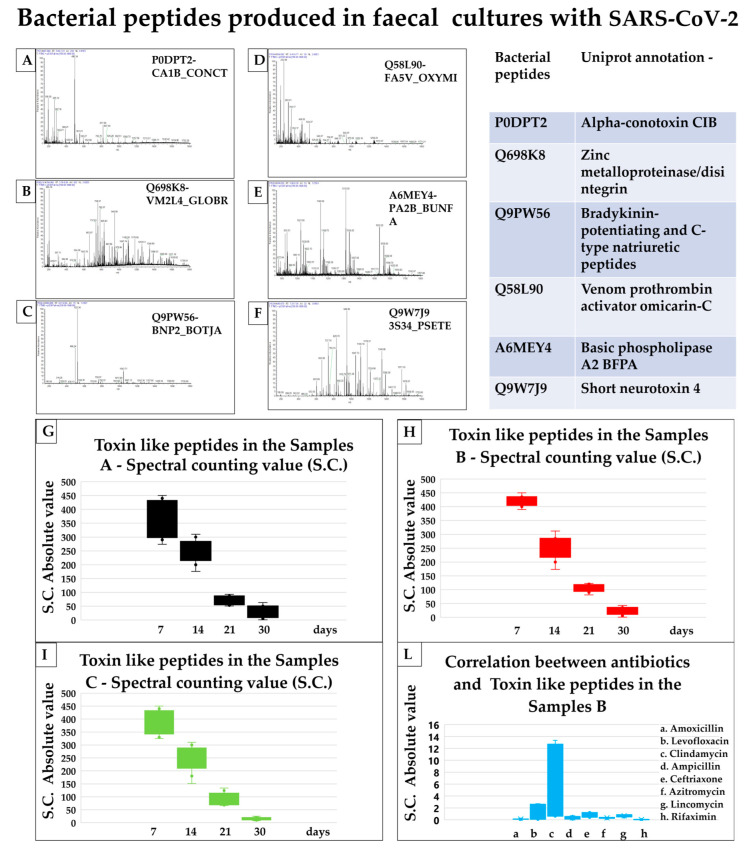Figure 1.
Toxin-like peptides data analysis. Panel (A–F): most commonly found toxin-like peptides (P). Panels (G–I,L,M) the increase of toxin-like peptides over time and the use of antibiotics. (Panels A–F): charge ratio mass spectra of the toxins-like peptides produced in faecal bacterial culture with SARS-CoV-2. Uniprot annotation ID. (Panel A): P0DPT2, alfa conotoxin-like peptides; (Panel B): Q698K8, zinc metalloproteinase/disintegrin; (Panel C): Q9PW56, Bradykinin- potentiating and C-type natriuretic peptides; (Panel D): Q58L90, venom prothrombin activator omicarin-C; (Panel E): basic phospholipase A2 BFBA; (Panel F): Q9W7J9, short neurotoxin 4. (Panels G–I,L): Spectral counting toxin-like peptides value to LC-SACI-CIMS technique. The values of the experimental repetitions at 7, 14, 21, and 30 days are represented by the box plots. The value of toxicological production in samples C (Panel I) is similar to those in samples A (Panel G) and B (Panel H), also in the absence of viral SARS-CoV-2 load. (Panel L): The amoxicillin and rifaximin stop the toxicological production versus other antibiotics in the bacterial cultures with SARS-CoV-2. (Panel M): High Log e value, LC-SACI-CIMS ion mobility technique, of toxin-like peptides (P) presence in samples A, B, and C and low Log e value of toxins in neg-B samples. (Panel N): Introducing four types of different antibiotics, there is a decrease in toxins production, more evidence for rifaximin and amoxicillin.


